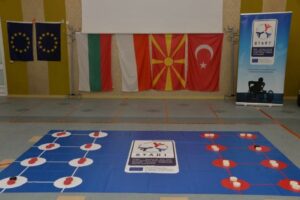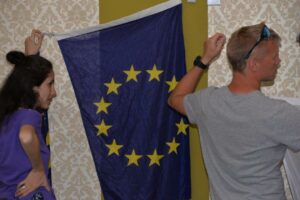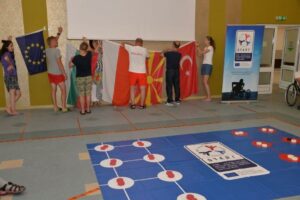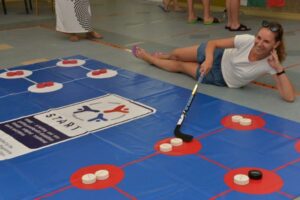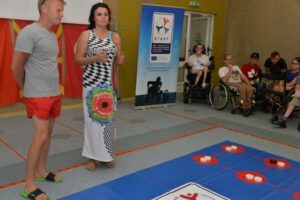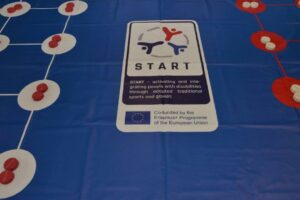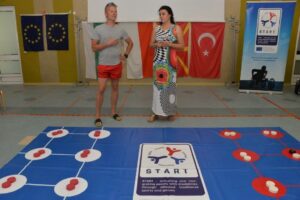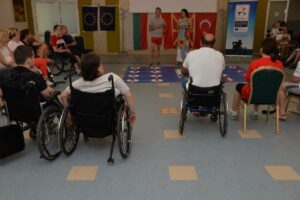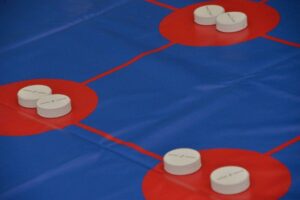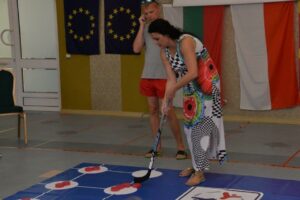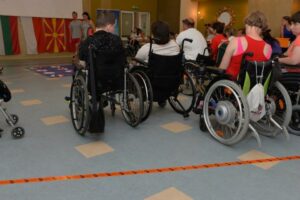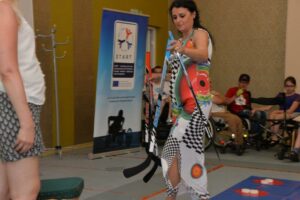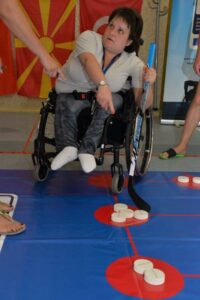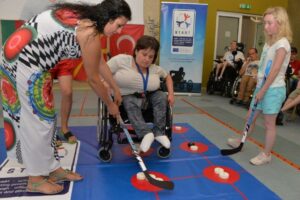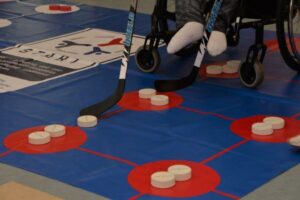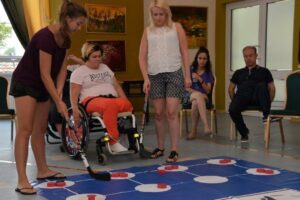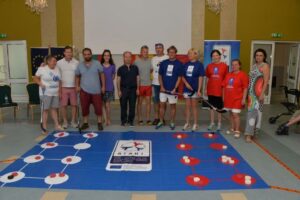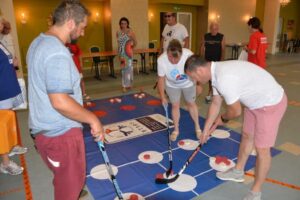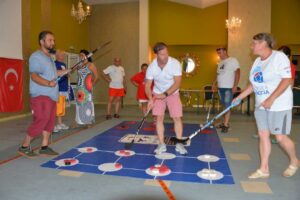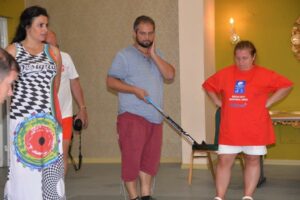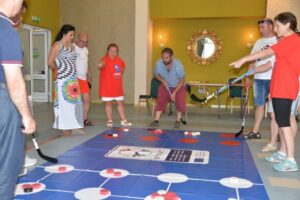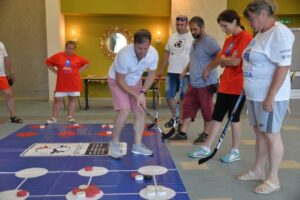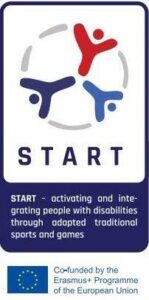On Wednesday in Wągrowiec, the partners of the project „START – activating
and integrating people with disabilities through adapted traditional sports”
Co-funded by the Erasmus + Programme of the European Union, presented
another traditional game – TSG. This time it was bulgarian „Yamichki” .
Name of the game: Holes – Yamichki
Origin of the game/background: There is an archeological finding in the
region of Kyustendil (Bulgaria) of a clay board game with 16 holes on it,
arranged in four rows (ranks) each with four columns. The form of the object
is four-side truncated pyramid and its surface has quadratic shape. It dates
back to the Early Eneolithic (1st half of the V Millennium BC) and the place
of finding is the village of Slatino, Kyustendil district (Bulgaria). It
could be played with seeds, small stones or small ceramic balls (frequently
found in the archeological site), whose number should be divisible by 4.
This clay prehistoric leisure game is adapted to a sport game for people
with disabilities using its 16 holes surface for a playground with 16
circles and applying one of the simple rules of a popular today board game
called Mancala.
Aim of the game: To collect all of the opponent’s pucks that are placed in
the inner column/row having four circles by passing the pucks subsequently
one by one from one circle to another.
Number of players: It can be played both individually, one player on each
side, or in a team of two players on the side
Rules of playing: The Holes Game is played with 32 small pucks equally
divided among the 16 circles. The four rows of circles are separated into
two in the middle so that each of the sides of player/s to have two rows.
The pucks are preliminarily distributed into the circles – two pucks in each
circle. The game is of multiple lap type. It means that a player may have
more than one turn to play.
The game begins when a player starts his/her turn by passing the two pucks
from a circle randomly chosen from his/her side and placing them one by one
into the subsequent circles, again of his/her side. If the last puck placed
is in a circle already containing one or more pucks, the contents of this
circle are then pushed and the pucks distributed in the same way again. If
this circle is directly opposite to a circle from the opponent’s inner row,
the player also collects the pucks from this opponent’s circle and along
with the other ones collected continues to distribute them to his/her
subsequent circles one by one. A player’s turn only comes to an end when the
last puck of a 'lap’ ends up in an empty circle. Then a turn is given to the
opponent side. A player can only collect opponent’s pucks from the inner row
of circles. A winner is the player who is the first to collect the pucks
placed into the four circles of the opponent’s inner row.
During the turn the player can follow only one direction – clockwise or
counterclockwise.
The pucks are pushed and distributed to the subsequent circles by using a
stick. The players can play both from outer side of the playground and from
the middle of it, between the two sets of rows.
Project: „START – activating and integrating people with disabilities
through adapted traditional sports and games” Co-funded by the Erasmus +
Programme of the European Union (Small collaborative partnership 2016

